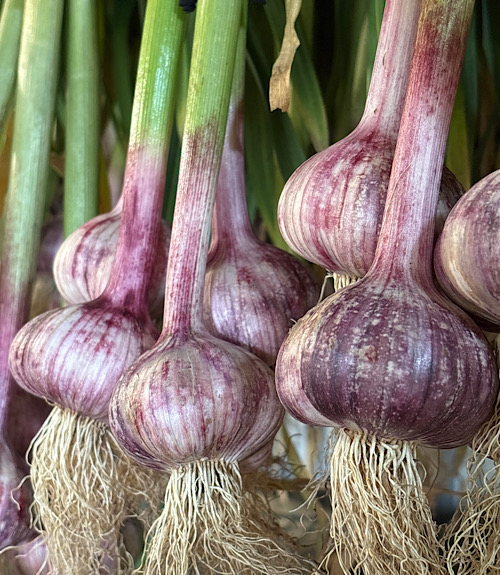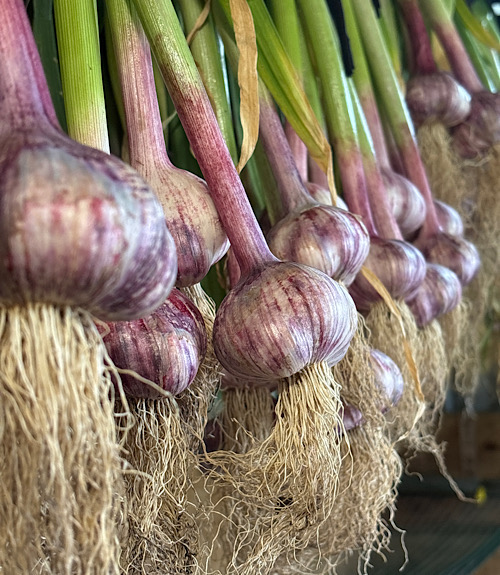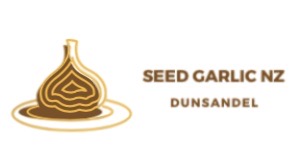


The New Zealand Purple Garlic bulbs that we offer for sale will have a minimum diameter of 60mm, containing 5 or more large cloves.
New Zealand Purple is a member of the Turban family that has been successfully cultivated in New Zealand and now has an identity all of its own. Unique to New Zealand, not only in its growing habits, but also in its colour and taste. The bulbs have four to seven large cloves with colourful white and red striped tunics. New Zealand Purple is an early variety, semi-bolding garlic, that sometimes produces a scape and sometimes it doesn’t, depending on the type of growing season it had. This is the earliest maturing varieties that can be grown in New Zealand. Plant big cloves early, at the beginning of May in soil with lots of well-aged organic matter, then harvest early, sometime in early November. It is said that this variety does not store all that well, but if kept away from direct sunlight and in a cool area with lots of fresh air, storage time can be up to five months.
Just a note on the dreaded rust that has now spread across the country: there are currently no industrial garlic varieties that are completely rust-resistant. Some North American growers are reporting that a limited few early varieties are exhibiting some disease tolerance, and I would tend to agree.
